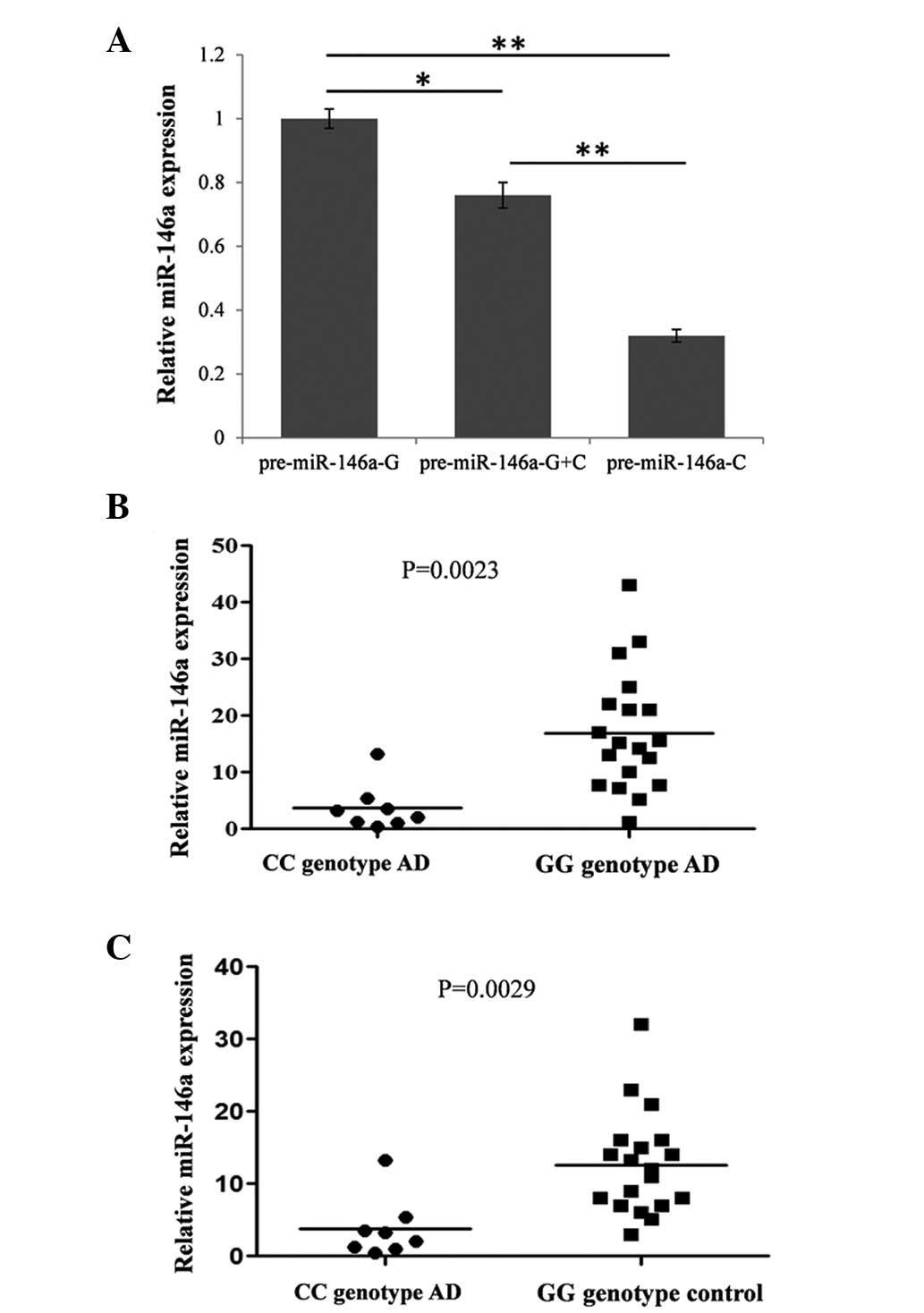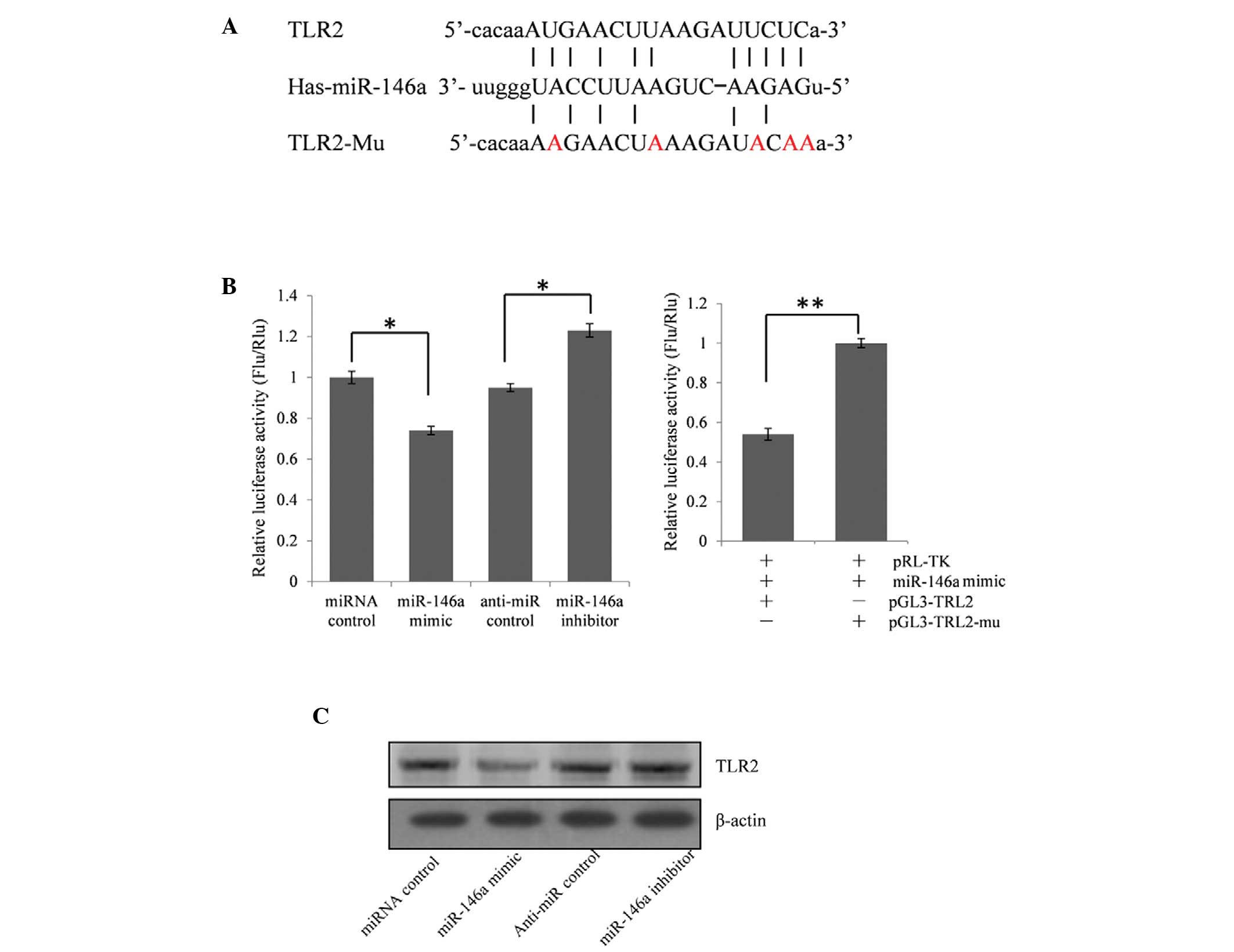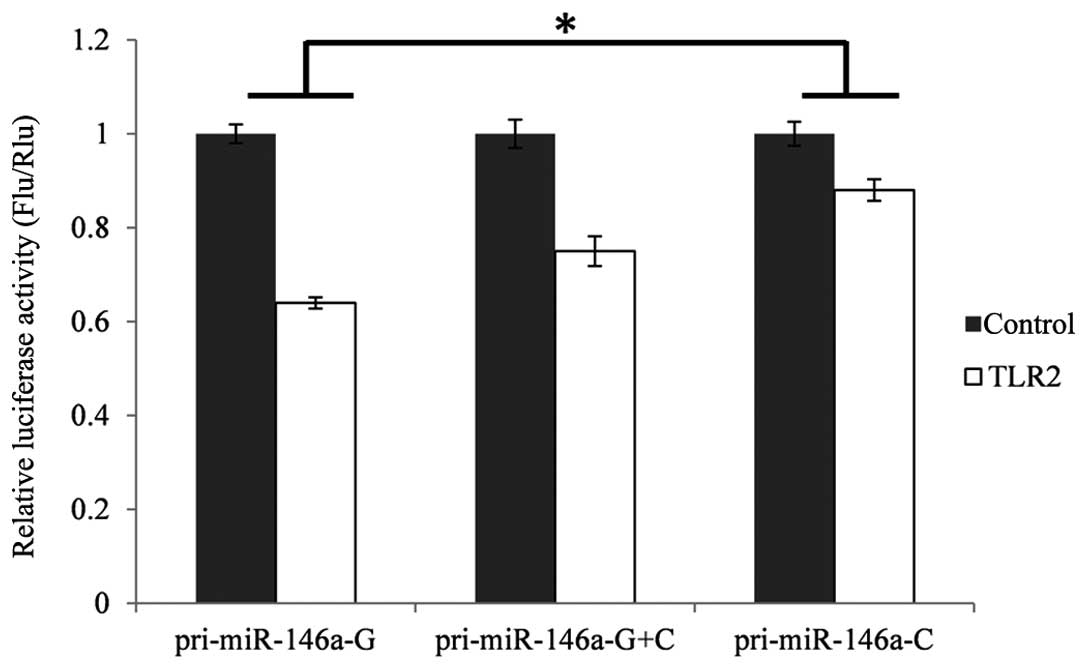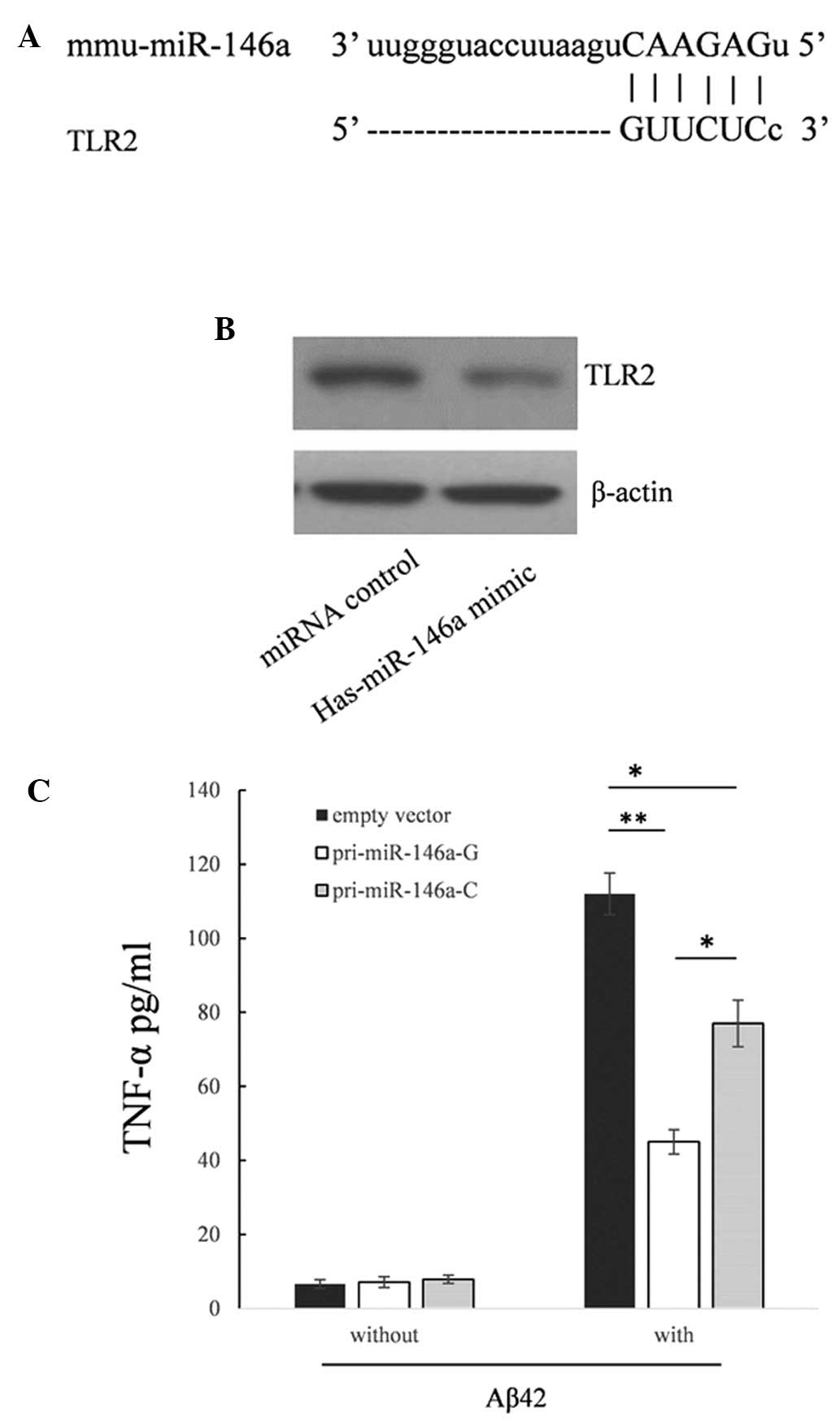|
1
|
Van den Hove DL, Kompotis K, Lardenoije R,
Kenis G, Mill J, Steinbusch HW, Lesch KP, Fitzsimons CP, De
Strooper B and Rutten BP: Epigenetically regulated microRNAs in
Alzheimer's disease. Neurobiol Aging. 35:731–745. 2014. View Article : Google Scholar
|
|
2
|
Schenk D, Barbour R, Dunn W, Gordon G,
Grajeda H, Guido T, Hu K, Huang J, Johnson-Wood K, Khan K, et al:
Immunization with amyloid-beta attenuates Alzheimer-disease-like
pathology in the PDAPP mouse. Nature. 400:173–177. 1999. View Article : Google Scholar : PubMed/NCBI
|
|
3
|
Machado A, Herrera AJ, de Pablos RM,
Espinosa-Oliva AM, Sarmiento M, Ayala A, Venero JL, Santiago M,
Villarán RF, Delgado-Cortés MJ, et al: Chronic stress as a risk
factor for Alzheimer's disease. Rev Neurosci. 25:785–804. 2014.
View Article : Google Scholar : PubMed/NCBI
|
|
4
|
Karch CM, Cruchaga C and Goate AM:
Alzheimer's disease genetics: From the bench to the clinic. Neuron.
83:11–26. 2014. View Article : Google Scholar : PubMed/NCBI
|
|
5
|
Morales I, Farías G and Maccioni RB:
Neuroimmunomodulation in the pathogenesis of Alzheimer's disease.
Neuroimmunomodulation. 17:202–204. 2010. View Article : Google Scholar : PubMed/NCBI
|
|
6
|
Hickman SE and El Khoury J: The
neuroimmune system in Alzheimer's disease: The glass is half full.
J Alzheimers Dis. 33(Suppl 1): S295–S302. 2013.
|
|
7
|
Liu S, Liu Y, Hao W, Wolf L, Kiliaan AJ,
Penke B, Rübe CE, Walter J, Heneka MT, Hartmann T, et al: TLR2 is a
primary receptor for Alzheimer's amyloid β peptide to trigger
neuroinflammatory activation. J Immunol. 188:1098–1107. 2012.
View Article : Google Scholar
|
|
8
|
Masters CL and Beyreuther K: Alzheimer's
centennial legacy: prospects for rational therapeutic intervention
targeting the Abeta amyloid pathway. Brain. 129:2823–2839. 2006.
View Article : Google Scholar : PubMed/NCBI
|
|
9
|
Bolmont T, Haiss F, Eicke D, Radde R,
Mathis CA, Klunk WE, Kohsaka S, Jucker M and Calhoun ME: Dynamics
of the microglial/amyloid interaction indicate a role in plaque
main tenance. J Neurosci. 28:4283–4292. 2008. View Article : Google Scholar : PubMed/NCBI
|
|
10
|
Meyer-Luehmann M, Spires-Jones TL, Prada
C, Garcia-Alloza M, de Calignon A, Rozkalne A, Koenigsknecht-Talboo
J, Holtzman DM, Bacskai BJ and Hyman BT: Rapid appearance and local
toxicity of amyloid-beta plaques in a mouse model of Alzheimer's
disease. Nature. 451:720–724. 2008. View Article : Google Scholar : PubMed/NCBI
|
|
11
|
Jana M, Palencia CA and Pahan K: Fibrillar
amyloid-beta peptides activate microglia via TLR2: Implications for
Alzheimer's disease. J Immunol. 181:7254–7262. 2008. View Article : Google Scholar : PubMed/NCBI
|
|
12
|
Udan ML, Ajit D, Crouse NR and Nichols MR:
Toll-like receptors 2 and 4 mediate Abeta (1–42) activation of the
innate immune response in a human monocytic cell line. J Neurochem.
104:524–533. 2008.
|
|
13
|
Richard KL, Filali M, Préfontaine P and
Rivest S: Toll-like receptor 2 acts as a natural innate immune
receptor to clear amyloid beta 1–42 and delay the cognitive decline
in a mouse model of Alzheimer's disease. J Neurosci. 28:5784–5793.
2008. View Article : Google Scholar : PubMed/NCBI
|
|
14
|
Zhang W, Wang LZ, Yu JT, Chi ZF and Tan L:
Increased expressions of TLR2 and TLR4 on peripheral blood
mononuclear cells from patients with Alzheimer's disease. J Neurol
Sci. 315:67–71. 2012. View Article : Google Scholar
|
|
15
|
Maes OC, Chertkow HM, Wang E and Schipper
HM: MicroRNA: Implications for Alzheimer Disease and other Human
CNS Disorders. Curr Genomics. 10:154–168. 2009. View Article : Google Scholar : PubMed/NCBI
|
|
16
|
Xu J, Li Y, Wang F, Wang X and Cheng B:
Suppressed miR-424 expression via upregulation of target gene Chk1
contributes to the progression of cervical cancer. Oncogene.
32:976–987. 2013. View Article : Google Scholar
|
|
17
|
Farazi TA, Hoell JI, Morozov P and Tuschl
T: MicroRNAs in human cancer. Adv Exp Med Biol. 774:1–20. 2013.
View Article : Google Scholar : PubMed/NCBI
|
|
18
|
Lukiw WJ, Zhao Y and Cui JG: An
NF-kappaB-sensitive micro RNA-146a-mediated inflammatory circuit in
Alzheimer disease and in stressed human brain cells. J Biol Chem.
283:31315–31322. 2008. View Article : Google Scholar : PubMed/NCBI
|
|
19
|
Li YY, Cui JG, Hill JM, Bhattacharjee S,
Zhao Y and Lukiw WJ: Increased expression of miRNA-146a in
Alzheimer's disease transgenic mouse models. Neurosci Lett.
487:94–98. 2011. View Article : Google Scholar
|
|
20
|
Jazdzewski K, Murray EL, Franssila K,
Jarzab B, Schoenberg DR and de la Chapelle A: Common SNP in
pre-miR-146a decreases mature miR expression and predisposes to
papillary thyroid carcinoma. Proc Natl Acad Sci USA. 105:7269–7274.
2008. View Article : Google Scholar : PubMed/NCBI
|
|
21
|
Betel D, Wilson M, Gabow A, Marks DS and
Sander C: The microRNA.org resource: Targets and expression.
Nucleic Acids Res. 36(Database): D149–D153. 2008. View Article : Google Scholar :
|
|
22
|
Ransohoff RM and Brown MA: Innate immunity
in the central nervous system. J Clin Invest. 122:1164–1171. 2012.
View Article : Google Scholar : PubMed/NCBI
|
|
23
|
Lynch MA: The impact of neuroimmune
changes on development of amyloid pathology; relevance to
Alzheimer's disease. Immunology. 141:292–301. 2014. View Article : Google Scholar :
|
|
24
|
Nakasa T, Miyaki S, Okubo A, Hashimoto M,
Nishida K, Ochi M and Asahara H: Expression of microRNA-146 in
rheumatoid arthritis synovial tissue. Arthritis Rheum.
58:1284–1292. 2008. View Article : Google Scholar : PubMed/NCBI
|
|
25
|
Sonkoly E, Wei T, Janson PC, Sääf A,
Lundeberg L, Tengvall-Linder M, Norstedt G, Alenius H, Homey B,
Scheynius A, et al: MicroRNAs: Novel regulators involved in the
pathogenesis of psoriasis? PLoS One. 2:e6102007. View Article : Google Scholar : PubMed/NCBI
|
|
26
|
Sethi P and Lukiw WJ: Micro-RNA abundance
and stability in human brain: Specific alterations in Alzheimer's
disease temporal lobe neocortex. Neurosci Lett. 459:100–104. 2009.
View Article : Google Scholar : PubMed/NCBI
|













